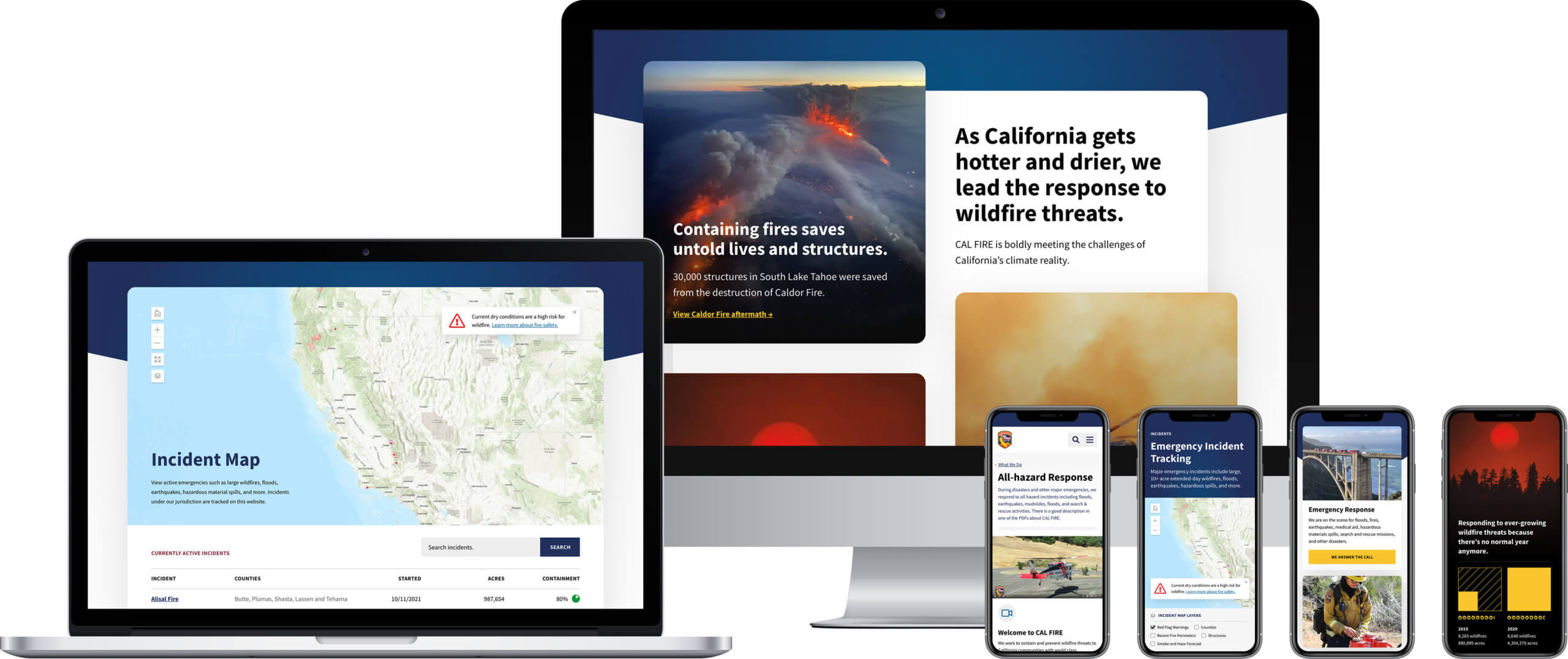CAL FIRE is on the front lines when disaster strikes. We delivered an attractive, modern website as responsive as they are.
Case Study: California Department of Forestry and Fire Protection | User Experience Design, Communication, and CMS Development | Sitecore + Azure
Fire.ca.gov gets millions of visits a day during California’s wildfires. Visitors come to track the spread and containment of large wildfires when homes and lives are at stake.
As California gets hotter and drier, the Department of Forestry and Fire Protection (CAL FIRE) knew they had to upgrade their web presence to communicate the impact of significant State investments in wildfire prevention, forest management, and public outreach. During wildfires, millions of people seek critical information about the status of the spread of fire on a legacy website.
Together, we upgraded fire.ca.gov to be blazingly fast, stable during extreme traffic peaks, visually engaging, and easier for staff to manage.
The largest firefighting force in the nation deserves high-performance technology solutions.
CAL FIRE needed a reliable website that could prevent downtime during peak traffic periods when the public relies on their fire containment the most. And, the massive wildland firefighting force wanted a visually impressive web presence to match the life- and property-saving work they do every day.
We partnered with CAL FIRE to implement Sitecore CMS, Microsoft Azure scalable architecture and content delivery network, and configured APIs to display ESRI maps visualizing near real-time incident management data drawing from internal reporting systems.
Powered by:


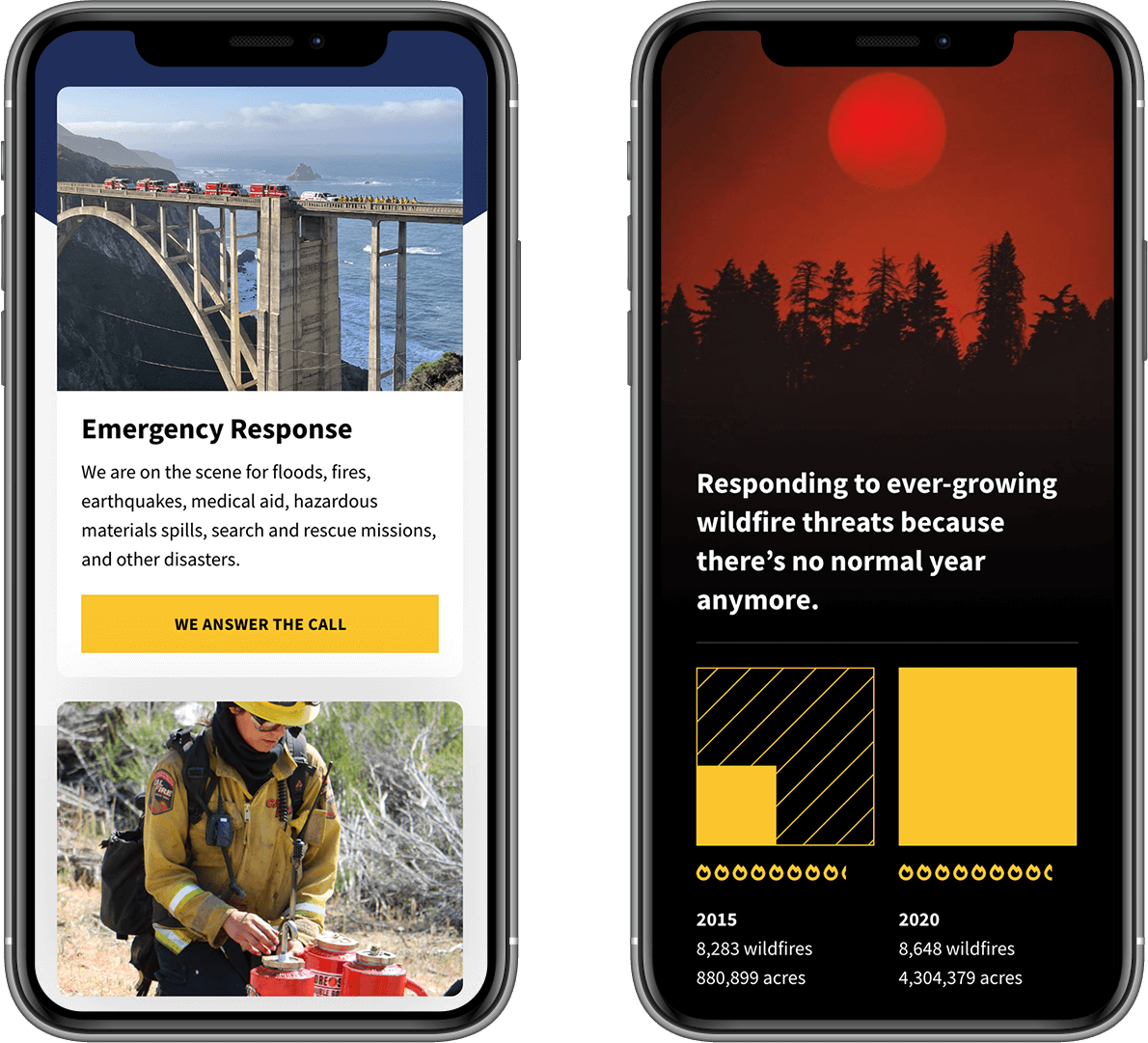
Challenges
- Incident map: CAL FIRE wanted to improve the way data tracking emergency incidents was displayed without compromising performance or reliability. The incident map had to display a map of ongoing emergency response across the large State in a performance-optimized way. We were on a mission to eliminate the possibility of downtime during peak traffic periods while seamlessly integrating data from CAL FIRE’s incident management system to provide near real-time updates on wildfire containment.
- Talent recruitment: The increasing threats to California require more seasonal firefighters and pilots, as well as professionals in administration, finance, biology, executive leadership, and more. CAL FIRE needed persuasive messaging to convey how available roles in their department make a difference, detail the benefits offered through State service, and provide instructions for how to apply.
- Fragmented information across multiple sites: Because of the information architecture of the previous site, information for the public about the overall services offered by CAL FIRE, as well as how to prepare for wildfires, were on disparate websites. This caused confusion for users who didn’t understand how the CAL FIRE organization was structured in order to access the services and information they needed. This also caused challenges with content updates for the CAL FIRE team, which were often time-consuming and repeated across multiple websites.
- Not leveraging visual assets: CAL FIRE produced high-quality photo and video recaps of their work responding to disasters and documenting their work on the front lines, but it was stored on social media sites like YouTube and Flickr and not integrated into their website. Because CAL FIRE was utilizing an older version of an approved state website template, the organization had limited options to make the site visually appealing and fully integrate the investments they make in photography and video.
What We Did
We collaborated with CAL FIRE’s team to implement the Sitecore content management system (CMS). In addition to managing and organizing content, content owners can optimize access to information and resources using a number of user-friendly content management features.
We supported content migration from their existing Umbraco platform into Sitecore, including consolidation of sites for different programs and divisions, making content easier to find from a single location.
We deployed the complex website on the Microsoft Azure cloud infrastructure, using a suite of PaaS and SaaS solutions. This included app services, web application firewalls, and a robust Content Delivery Network (CDN) to handle large traffic loads. The website performance improvements included increased loading speed and reliability when millions of visitors access the website.
We integrated with CAL FIRE’s incident management system via APIs and ESRI-based maps, providing near real-time information to allow citizens to make informed decisions.
We improved search capabilities, powered by Sitecore and Apache Solr, to present information in a more digestible and integrated manner.
Outcomes
- Blazing-fast. The average page response time for most pages was brought to under 1 second under the load of over 3,000 hits per second (3x the peak traffic to calfire.ca.gov incident map during the Camp Fire).
- Ultra-reliable. The website is integrated with Microsoft Azure, a highly available and scalable system architecture.
- Visually appealing. The new design created a library of visual components that integrates the compelling visuals that convey CAL FIRE’s work. The homepage can be easily changed to meet changing user needs during the fire season and the off season. The ESRI API was enhanced for a more navigable Incident map with key metrics at your fingertips.
- Improved search. The new solution expanded the search capability within the website. The previous site was only searchable in the incidents, new CMS improved the findability of content.
- Search engine optimization. The content was optimized to be findable by search engines, as measured by above-industry-average Google Lighthouse scores.
Project Highlights
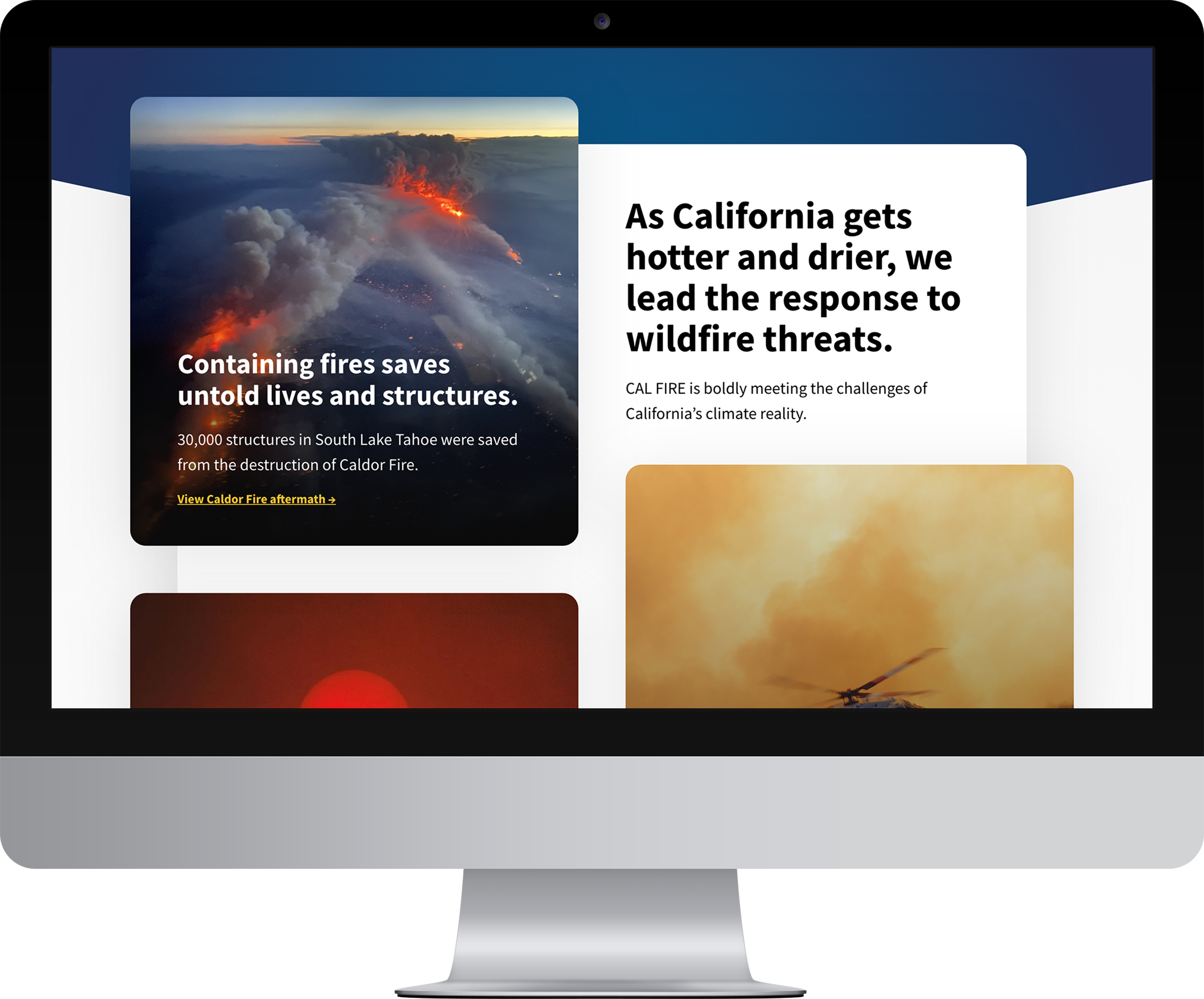
Engaging Visual Design
CAL FIRE wanted to communicate with constituents more broadly than technically—an exciting choice for a government website. Leadership sought to balance more important content and communicate the impact of their work for the economy and ecology.
The popular incident map needed to be easy to interpret and quick to load during high traffic spikes. SymSoft worked closely with partners to integrate the Incident map into the CMS and applied styling to improve usability.
As part of the engagement, SymSoft created visual designs for the homepage, key landing pages, and flexible design components. Designs played off the CAL FIRE logo’s shape while adhering to the State of California brand identity.
The strategic use of photography establishes the competence and audacity of the organization while effectively conveying the breadth of CAL FIRE’s mission.
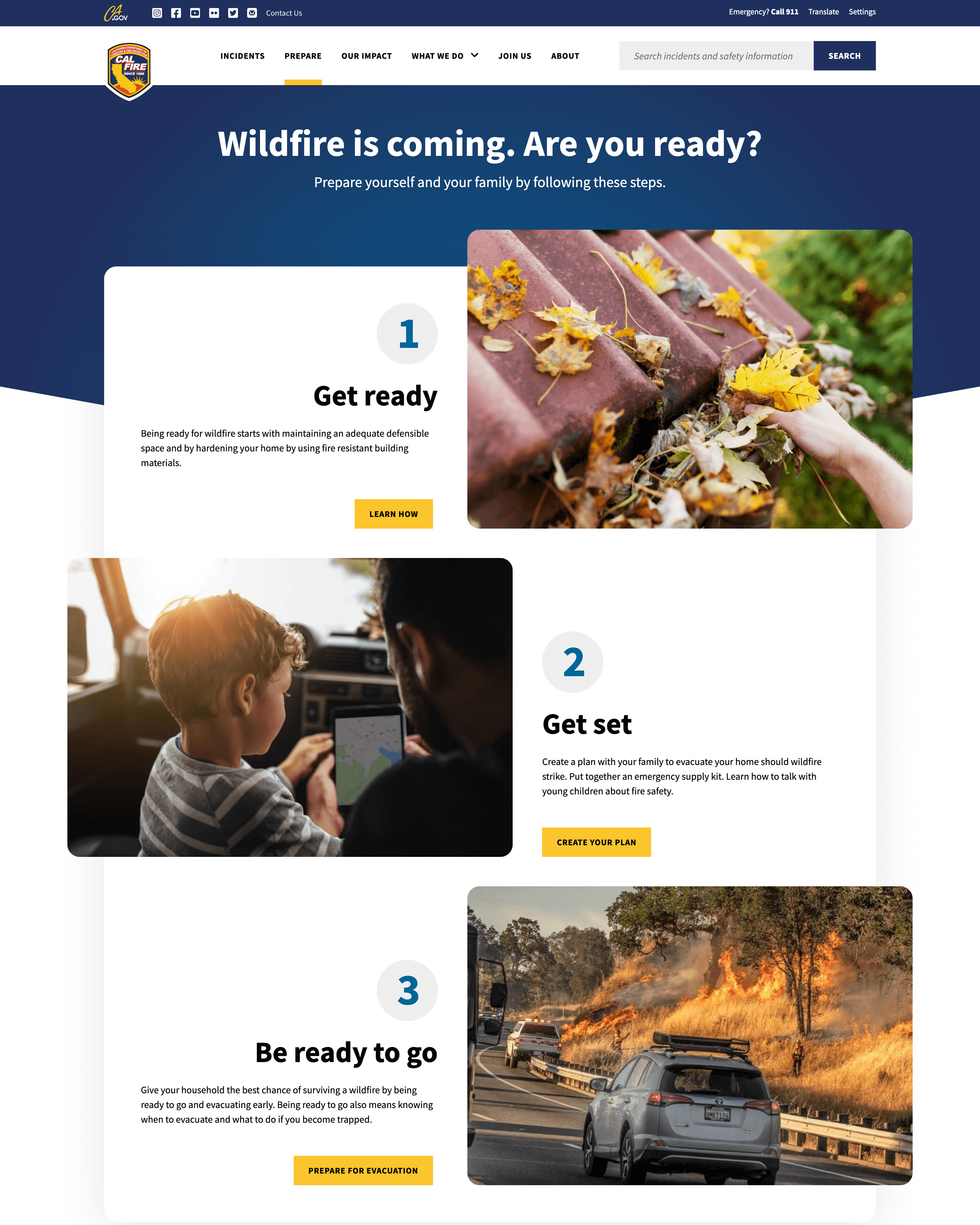
Secondary pages provide critical information for California residents about how to prepare for wildfire and harden their homes.
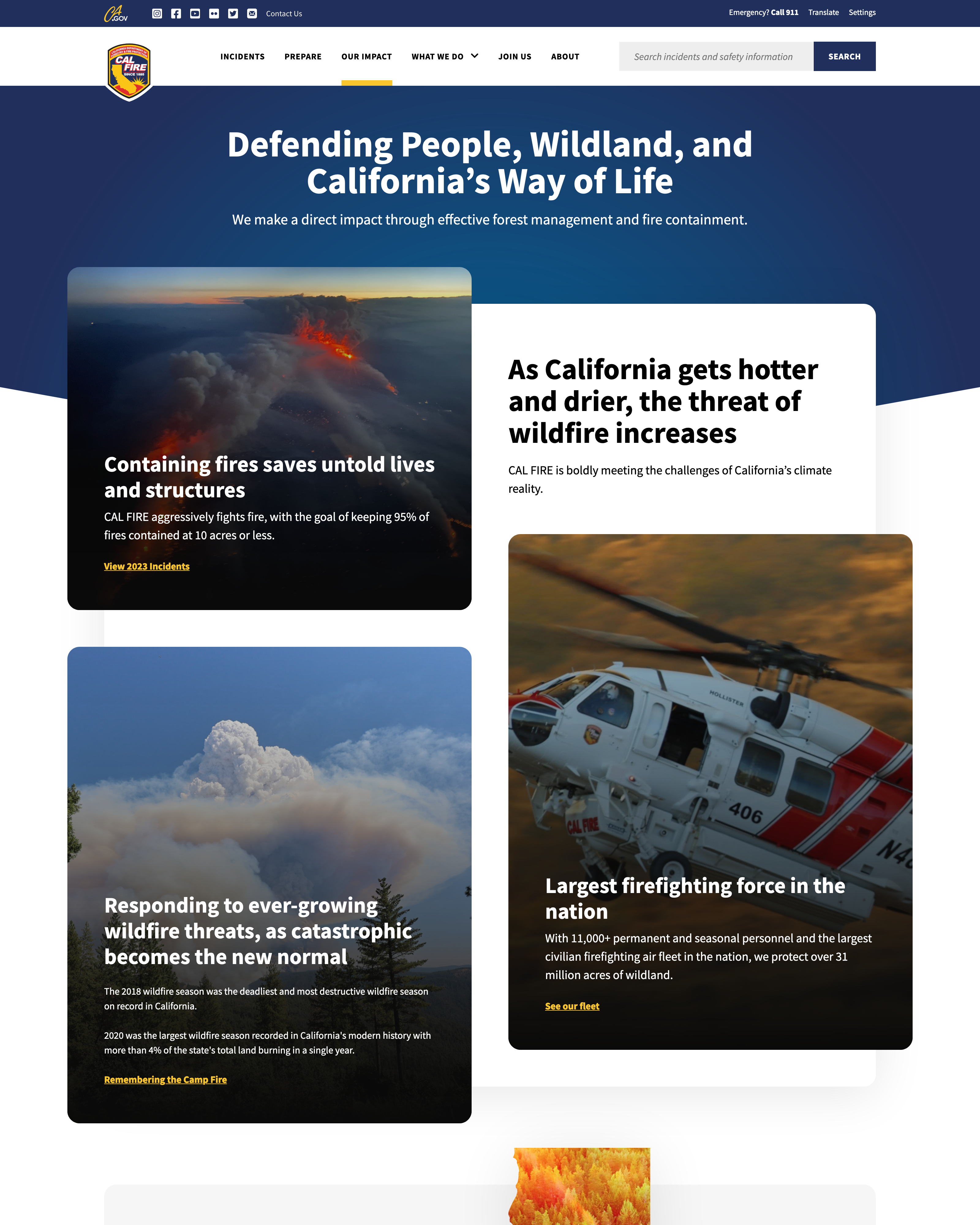
A new Impact page communicates CAL FIRE accomplishments, including critical but often unseen preventative work in forest health and resilience.
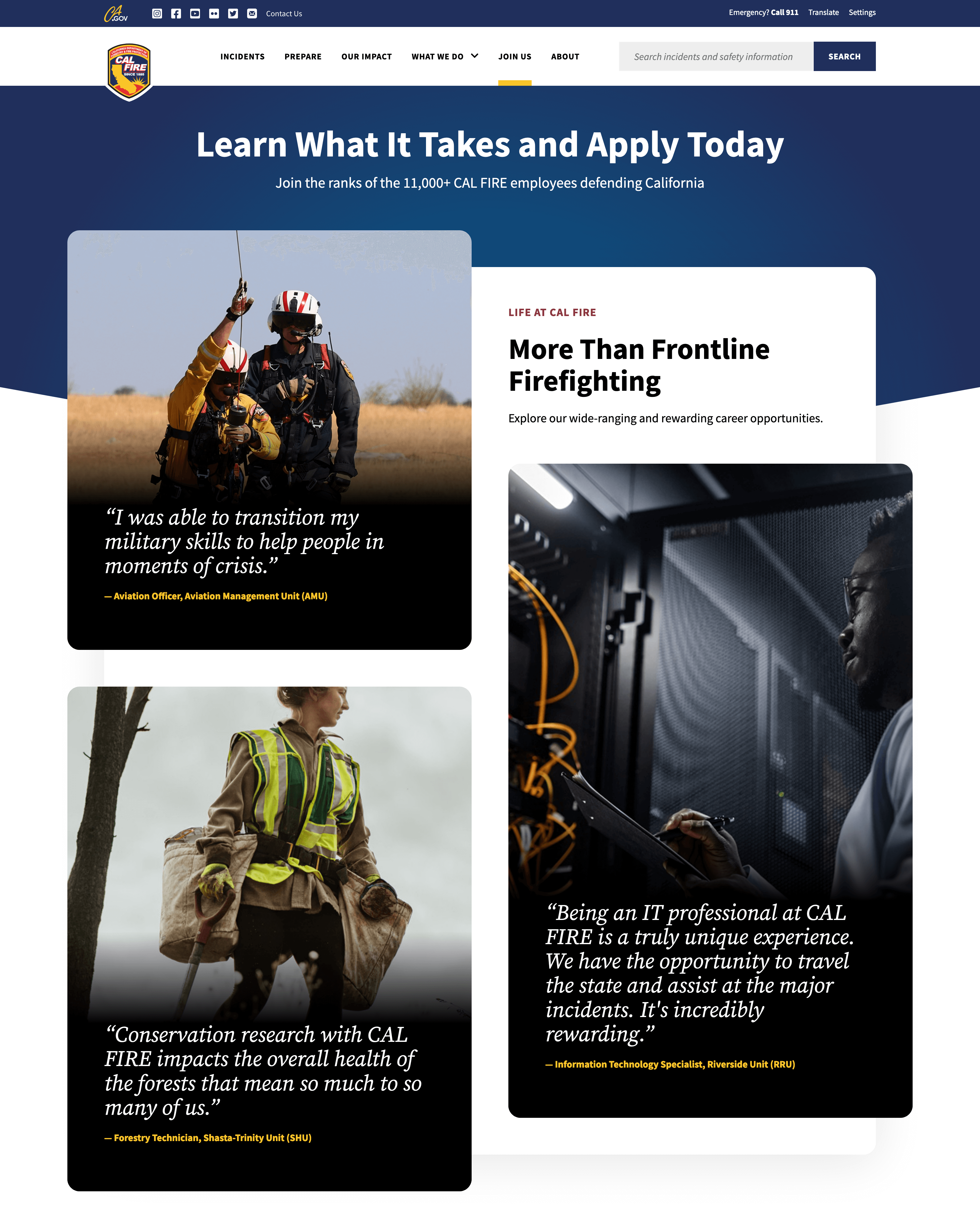
The Careers page more persuasively demonstrates the variety of careers through CAL FIRE as well as the benefits.
Configurable and Scalable Architecture

Platform Migration from Umbraco to Sitecore
CAL FIRE previously utilized Umbraco as a CMS to manage the content on the website. CAL FIRE decided to implement the new website with Sitecore, utilizing Sitecore’s advanced layout, content, and workflow capabilities.
Robust, Performant, and Reliable Microsoft Azure Architecture
To handle the varying needs of Californians in times of emergencies, we developed a complex yet easy to manage, Sitecore environment in the Microsoft Azure Cloud. Key capabilities of the architecture include:
- Content Delivery Network to serve assets and content in a manner that does not put stress on the environment during Statewide emergencies and wildfires.
- Platform-as-a-Service (PaaS) and Software-as-a-Service (SaaS) components leveraged in Microsoft Azure to remove complexities of managing and maintaining virtual machines and to decrease downtime.
- Deployments using Azure DevOps pipelines to ensure that features and functionality are released to the website in a systematic and stress-free manner.

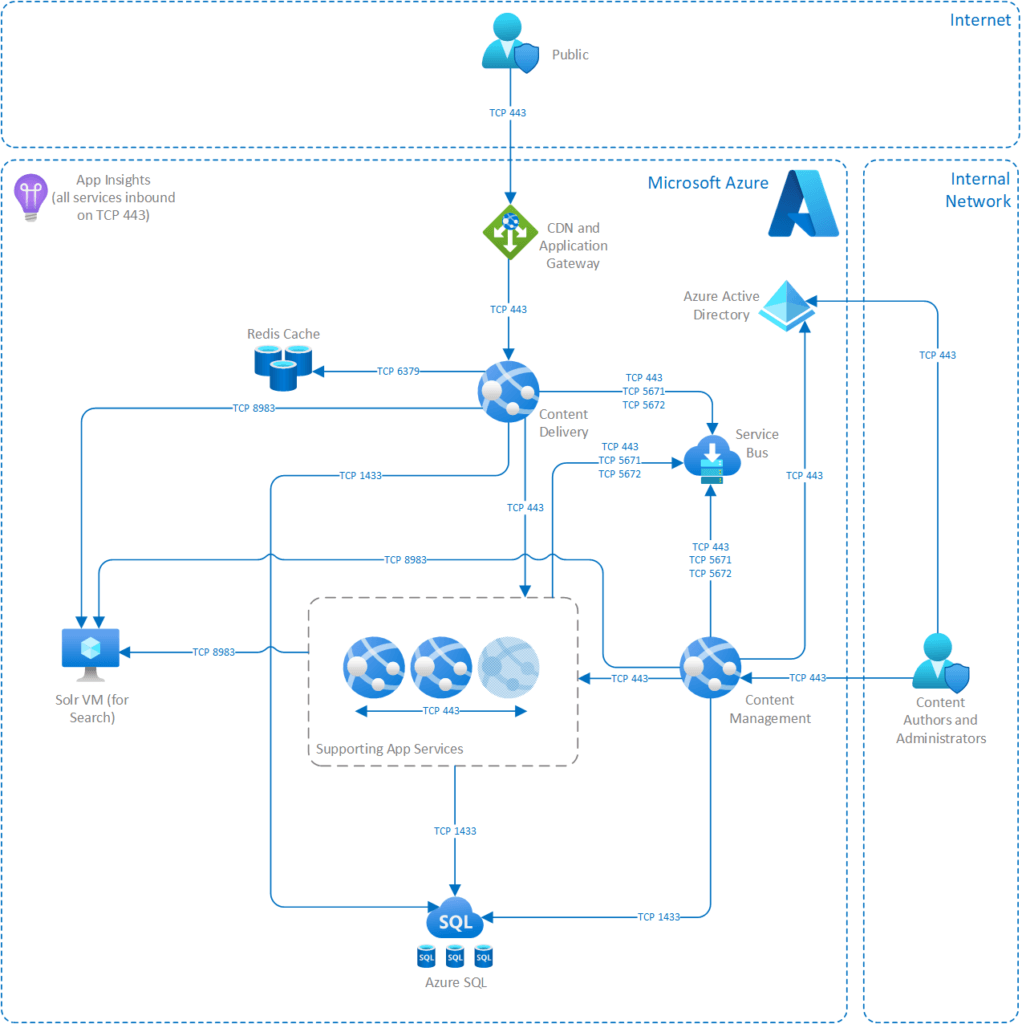
User Feedback and Load Testing
The most popular adjectives people use to describe the new experience.
Website visitors more easily found what they were searching for.
- Informative
- Clear
- Pretty
- Simple
%
Task Completion Rate
Each participant listed five adjectives to describe their feelings about the website. Adjectives included combinations of clear, colorful, concise, consistent, current, functional, informative, pleasant, pretty, professional, robust, simple, slick, and user-friendly.
On average, participants completed 93% of tasks, significantly higher than an industry average of 78%. Eight tasks were given to seven participants. Tasks were developed based on the priorities of the website set by CAL FIRE.
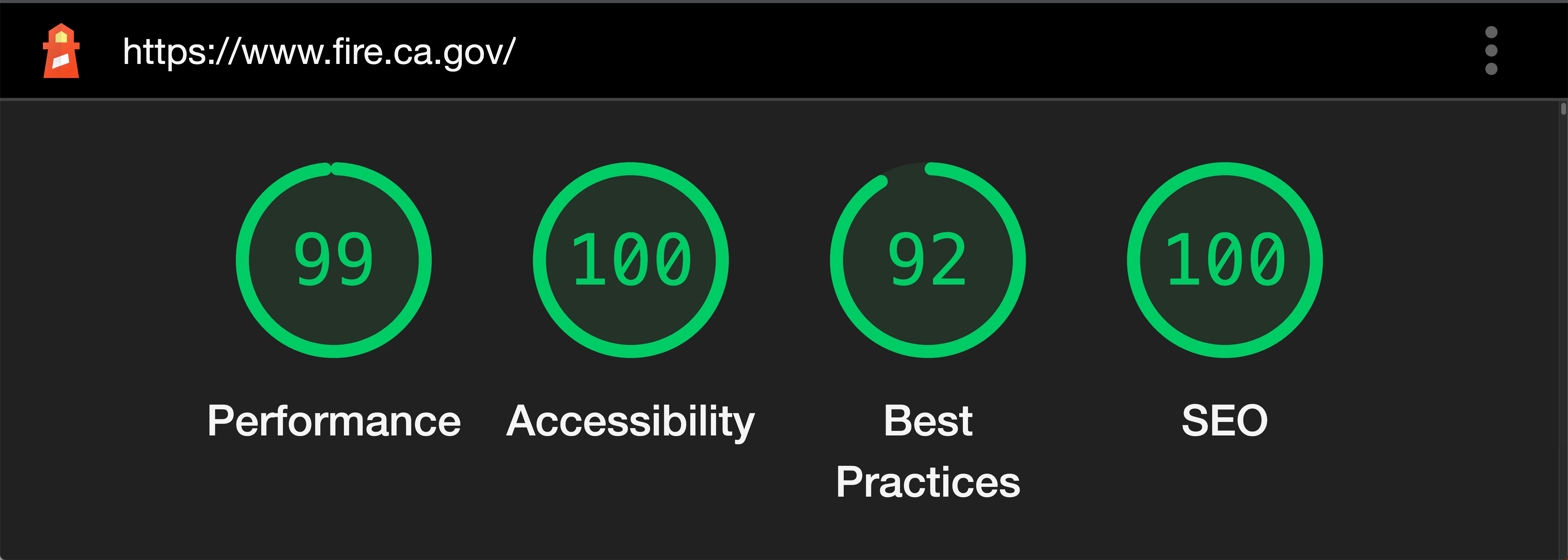
Built to serve the scale of California
By combining Sitecore CMS and Azure cloud services, including Content Delivery Network (CDN), we were able to accomplish a significantly high level of page speed and website availability. This resulted in improvements across the board, with sub-second page load times for most pages, efficient caching of information for performance and reliability, and greater flexibility in managing infrastructure to handle continuously evolving scenarios.
Google Lighthouse scores are consistently above 90%. This creates faster and more engaging experiences for California’s residents, including for those with limited connectivity in remote areas.
